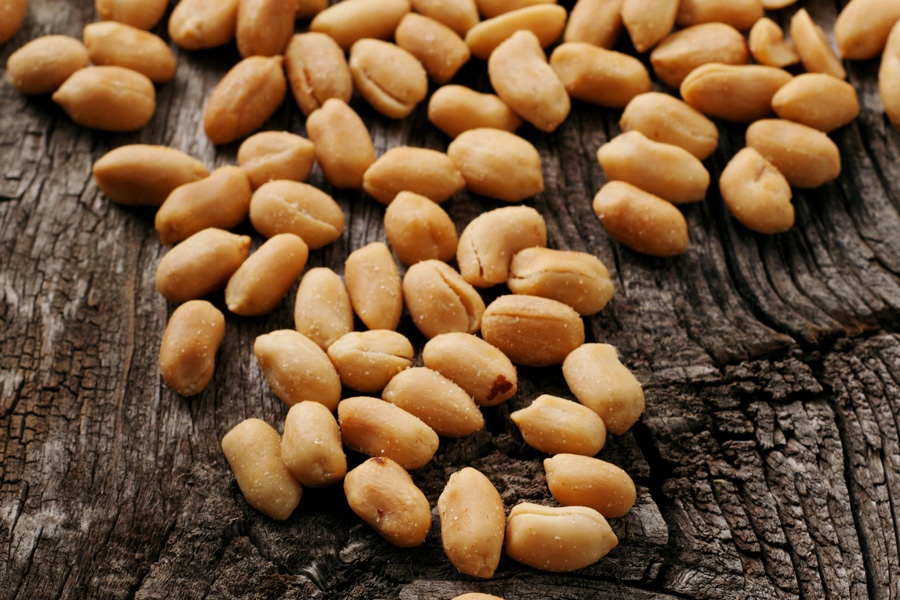Food Manufacturing
-

Produce buyers are increasingly requiring their suppliers to establish environmental monitoring programs in their packinghouses to verify the sanitary conditions of handling facilities and equipment. The first step of a successful monitoring program requires accurate zone designation, whereby surfaces are identified according to their proximity to and likelihood of contaminating a food product. This first publication in the “Packinghouse Environmental Monitoring Programs” series guides food safety managers as they determine how to prioritize food-contact and non-contact surfaces as they develop their monitoring programs.
Laurel Dunn
|
-

As a part of a packinghouse environmental monitoring program, adenosine triphosphate (ATP), protein, and allergen swabbing is used to ensure that packinghouse equipment and surfaces have been properly cleaned and prepared for sanitation. ATP, protein, and allergen swabbing is frequently incorporated to complement microbial swabbing practices or as an independent program. These swab types indicate the presence of soils and residues on equipment, determining the effectiveness of the cleaning portion of a sanitation program. Sample results can be read in minutes, unlike microbial swabs, which take days. For this reason, ATP, protein, and allergen swabs are used immediately after cleaning to rapidly confirm that cleaning procedures were thorough. Operations then sanitize and collect microbial swabs to verify the effectiveness of the sanitation process.
Laurel Dunn
|
-

Pomegranate is an emerging crop that has been experiencing a significant expansion in Georgia. Pomegranates are excellent sources of sugars, soluble fibers, vitamins, minerals, and phytochemicals, including polyphenols with strong antioxidant activity. Because of their nutritional content, pomegranates are considered functional foods (foods that provide health benefits in addition to basic nutrition). Several value-added products may be developed from pomegranate arils and pomegranate peels, including food ingredients with strong antioxidant content, which may be appealing to health-conscious consumers interested in including more plant-based ingredients into their diets. Hence, antioxidant-rich foods such as pomegranates may be used by the U.S. food industry more often as a source of natural ingredients. Not only does consuming pomegranates provide numerous health benefits, but pomegranate derivatives also have the potential to improve the sensory properties and shelf-life of food products. This bulletin describes the main phytochemicals present in pomegranate fruits and provides an overview of the potential value-added products that may be developed from Georgia-grown pomegranates.
Jinru Chen, Kevin Mis Solval, and Emma Moore
|
-

B 1478
Roasted Peanut Flavor
Flavor is the major determinant for consumers’ appreciation of roasted peanuts. Flavor development involves two important reactions: Maillard reaction and lipid oxidation. Maillard reaction mainly occurs during roasting to generate a pleasant “roasted” flavor. But during storage, lipid oxidation produces off-flavors and reduces roasted flavor, which is known as “flavor fade.” In order to retard lipid oxidation, high-oleic cultivars were developed. We have observed that compared to normal-oleic GA 06G, high-oleic GA 13M had higher consumer acceptability with a better capability to mitigate lipid oxidation, demonstrating that using a high-oleic trait is a potential solution to the problem of flavor fade.
Koushik Adhikari and Shangci Wang
|
-

Marketing fresh fruits and vegetables at farmers markets, roadside markets, and pick-your-own farms is an important and growing method of marketing. However, many of the containers used are not practical for consumers.
Bob Westerfield and Timothy Coolong
|
-

This bulletin provides the scientific basis and food-safety framework for developing a food safety plan for acid/acidified foods. This includes practical food-safety examples for the acidified foods, including foundational support of a recordkeeping system and forms. Learning how to develop a process-flow diagram, developing recordkeeping forms, and applying food-safety principles during acid/acidified-food production will provide a processor with a better understanding of how a systematic approach to food-safety principles should be applied during the production, processing, packaging, storage, and distribution of acid/acidified foods. This publication contains information on how to develop a plan, including FDA requirements for developing a food safety plan, and sample recordkeeping forms to guide an acid/acidified food processor to safely process, package, and distribute acidified foods in commerce.
Anand Mohan
|
-

The quality of an egg involves both the exterior and interior qualities of the egg. Egg quality includes the cleanliness of the shell, soundness of the shell, thickness of the albumen, and color of the yolk. Good egg quality is critical to maintaining the hatching potential of eggs, as improper handling or storage of eggs will reduce the ability of the eggs to hatch and produce good quality chicks. For table eggs, improper handling and storage of eggs will reduce the grade of the eggs and could pose a potential health hazard.
Claudia Dunkley
|
-

Many third-party audits, buyers, and standard operating procedures for produce packinghouses or other food facilities require regular adenosine triphosphate (ATP) or protein swabs to verify the effectiveness of the cleaning and sanitation protocols. This video demonstrates how to collect ATP and protein swabs, how to interpret swab results, and provides advice to help determine an acceptable baseline when implementing a new swabbing program.
Laurel Dunn, Andre Luiz Biscaia Ribeiro da Silva, and Govindaraj Dev Kumar
|
-

B 1526
Country Cured Ham
Country cured hams are considered a delicacy and are widely accepted by Georgians. Our forefathers cured country hams during the winter months in order to have a summer supply of meat. Country hams, properly cured, develop a distinct flavor during aging. Modern methods of curing and aging country hams are somewhat different from the methods used 50 to 100 years ago. The loss of meat due to spoilage is much less when it is cured under controlled refrigeration and aged under controlled environmental conditions for uniform quality. With a continued demand for country cured hams, there are more establishments being constructed. Country cured hams and bacon are a major source of income in many rural communities in our state. Cured pork valued at many thousands of dollars is lost each year in Georgia due to improper curing and storage. Refrigeration, either by machinery or from our normal weather conditions in the fall and winter, is essential in a ham curing operation. Sometimes the latter is not dependable and may cause ham spoilage. The method of curing described in this publication can be applied to on-the-farm curing for family use or for commercial ham operations. It is not difficult to cure pork if a few basic principles in curing, salt equalization, and aging are closely observed.
Anand Mohan
|